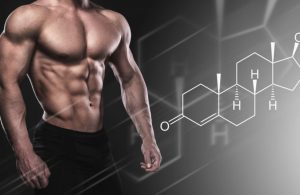The lack of androgens (male sex hormones) in the male body, associated with its natural aging, usually develops after 50 years, but the first manifestations can occur much earlier – at 40-45 years.
Age-related androgenic deficiency is a lack of androgens (male sex hormones) in the male body, associated with its natural aging. Usually this condition develops after 50 years, but the first manifestations can occur much earlier – at 40-45 years. This is accompanied by signs of androgen deficiency affecting all organs and systems. At the heart of androgen deficiency is a decrease in the production of the main male sex hormone testosterone.
Causes
Before talking about the reasons for the development of age-related androgenic deficiency, it is necessary to say about where and how the formation of testosterone occurs.
Testosterone is the main hormone in the male body responsible for:
the growth and development of the genitals;
the appearance of secondary sexual characteristics (hair growth on the face, trunk);
the development of muscle mass;
the formation of male behavior (initiative, aggressiveness, etc.);
libido;
an erection;
the ability to form spermatozoa (spermatogenesis);
features of the distribution of adipose tissue;
development and structure of the skeleton.
Testosterone is produced in the testes by Leydig cells under the influence of hormones produced in the central nervous system by the pituitary gland and hypothalamus. These processes are dependent on each other and have complex regulatory mechanisms.
Among other things, testosterone itself in the blood can be in several variants, or so-called fractions. Allocate fractions of active and inactive testosterone. Active testosterone is responsible for the main effects of testosterone (see above).
There are many theories of aging that lead to the development of age-related androgen deficiency. The main reasons leading to testosterone deficiency are:
age-related changes in the testicles (testes), accompanied by a decrease in Leydig cells. They are associated with the development of atherosclerosis, a decrease in the blood supply and nutrition of these cells, as well as with the “programmed” death of these cells (apoptosis);
age-related changes in the pituitary gland and hypothalamus, as a result of which the regulation of testosterone production is impaired;
some genetic predispositions associated with the response of cells to testosterone and some hormones of the pituitary gland and hypothalamus.
How does this manifest itself?
The main complaint that forces a man to consult an andrologist is the weakening and disappearance of spontaneous or adequate erections, the fading of sexual arousal, a decrease in the frequency of sexual fantasies and libido. In addition to sexual dysfunctions, there is a feeling of heat, sweating, fatigue and irritability appear. Many men note the appearance of forgetfulness, sleep disturbances, as well as a decrease in the ability to concentrate for a long time.
There are changes in the skin and the musculoskeletal system in the form of wrinkles, hair loss, dry and sagging skin, a decrease in muscle mass and the appearance of fatty deposits, gynecomastia (enlargement of the mammary glands), and the development of osteoporosis.
Diagnostics
To diagnose age-related androgenic deficiency, it is necessary to carry out a number of laboratory tests:
study of different fractions of testosterone (total testosterone, biologically active testosterone);
determination of globulin binding sex steroids (SHBG);
biochemical blood test;
general blood analysis.
The study of bone density to detect osteoporosis, as well as a number of others necessary for the doctor to establish and clarify the diagnosis of studies.
Treatment
To date, the main role in the treatment of age-related androgenic deficiency is assigned to replacement therapy with testosterone preparations in various forms. There is information about the use of stimulating therapy with chorionic gonadotropin (CG), aimed at enhancing the synthesis of its own testosterone.
Methods of administering testosterone https://en.wikipedia.org/wiki/Testosterone preparations:
transdermal, or percutaneous (patches, gels and creams);
subcutaneous (testosterone implants);
oral (oral capsules);
injection (oil solution for intramuscular injection).
